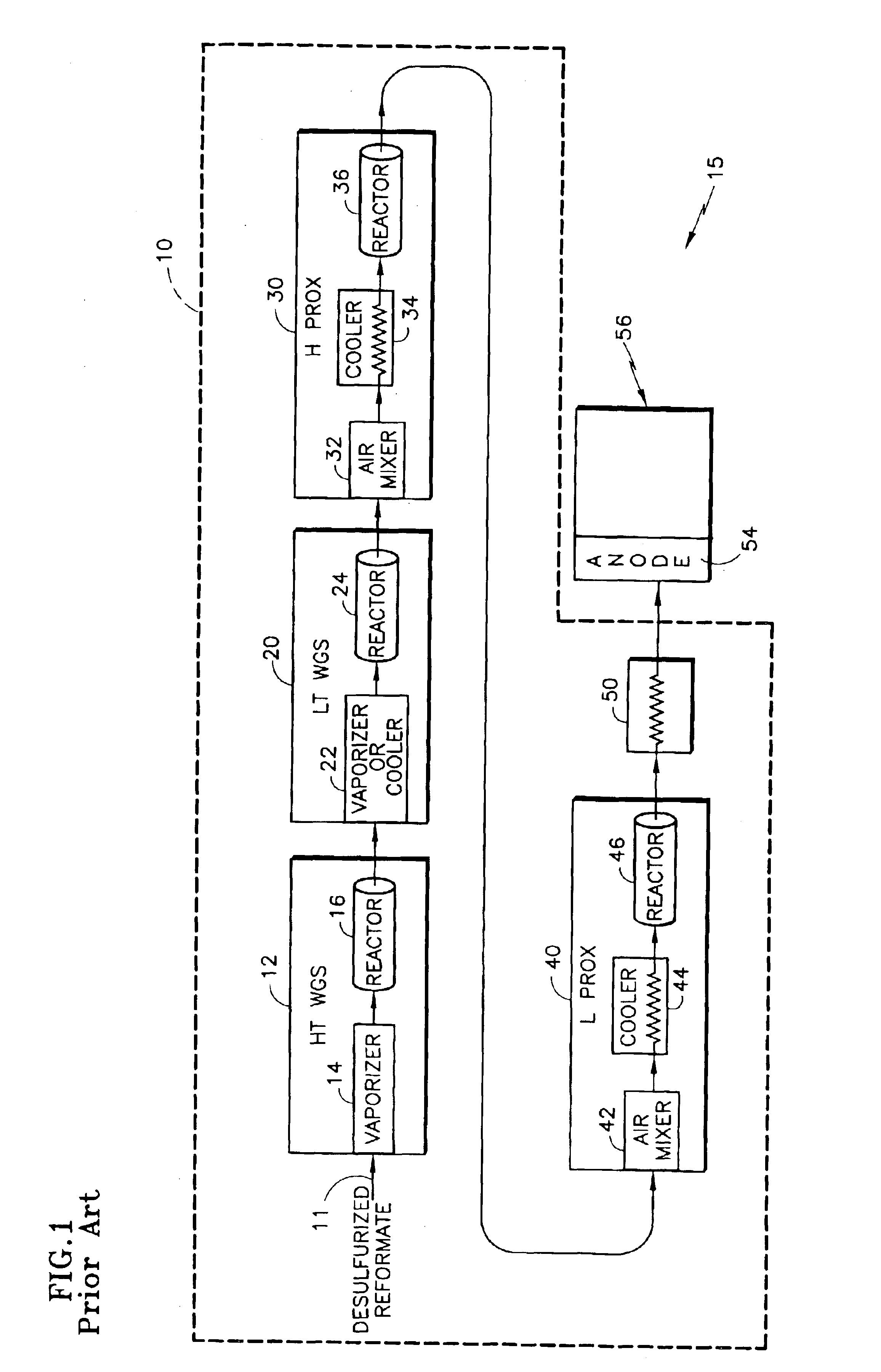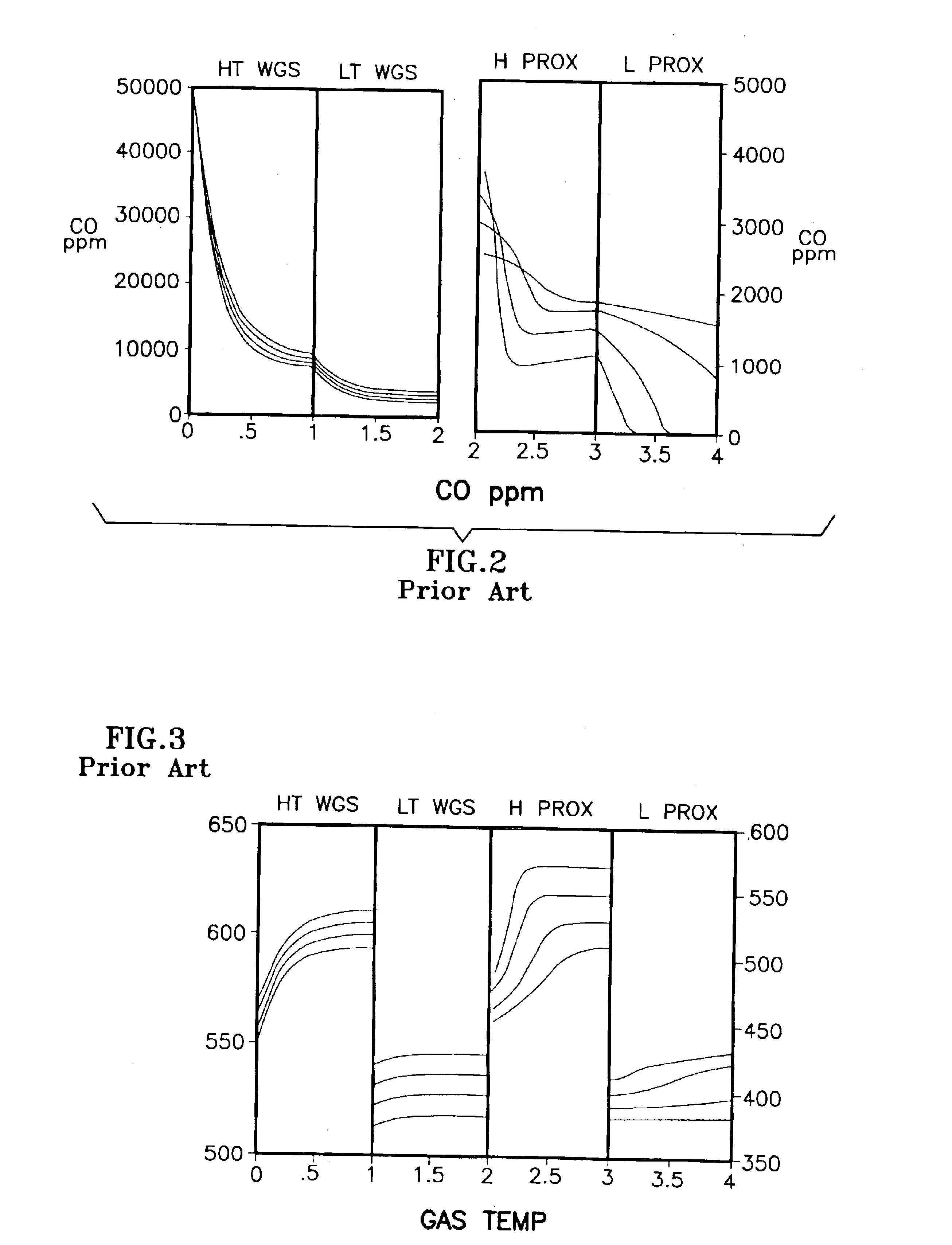High performance fuel processing system for fuel cell power plant
a fuel cell and processing system technology, applied in the field of fuel processing, can solve the problems of increasing the reaction rate of the ht wgs catalyst with temperature, the anode of the pem fuel cell is particularly susceptible to being “poisoned, and the reaction rate of the ht wgs catalyst is exponentially increased with temperature, so as to reduce the exothermicity, reduce the size and weight, and reduce the effect of exothermicity
- Summary
- Abstract
- Description
- Claims
- Application Information
AI Technical Summary
Benefits of technology
Problems solved by technology
Method used
Image
Examples
Embodiment Construction
[0032]The description of the prior art, with reference to FIGS. 1-4, revealed the limitations and / or sensitivities of existing FPS configurations, particularly in their requirement for both an H PROX subsystem 30 and an L PROX subsystem 40, and the further complex dependence on coolant flow for CO conversion at differing power conditions. This configuration assumed the use of a recently-developed, noble metal-based, WGS catalyst of the general type described in U.S. Pat. No. 6,455,182 for Shift Converter Having an Improved Catalyst Composition, and Method for its Use, assigned to the assignee of the present invention, in at least the LT WGS reactor 24, which catalyst typically has a high activity. The activation energy and CO reaction order for such catalyst might typically be 14 to 20 Kcal / mole of CO and 0.20 to 0.50 respectively. Similarly, the temperature of the reformate exiting from the LT WGS reactor 24 might be between 280° and 320° C. and the CO level from 10,000 to 5,000 pp...
PUM
| Property | Measurement | Unit |
|---|---|---|
| Temperature | aaaaa | aaaaa |
| Size | aaaaa | aaaaa |
| Size | aaaaa | aaaaa |
Abstract
Description
Claims
Application Information
 Login to View More
Login to View More - R&D
- Intellectual Property
- Life Sciences
- Materials
- Tech Scout
- Unparalleled Data Quality
- Higher Quality Content
- 60% Fewer Hallucinations
Browse by: Latest US Patents, China's latest patents, Technical Efficacy Thesaurus, Application Domain, Technology Topic, Popular Technical Reports.
© 2025 PatSnap. All rights reserved.Legal|Privacy policy|Modern Slavery Act Transparency Statement|Sitemap|About US| Contact US: help@patsnap.com



